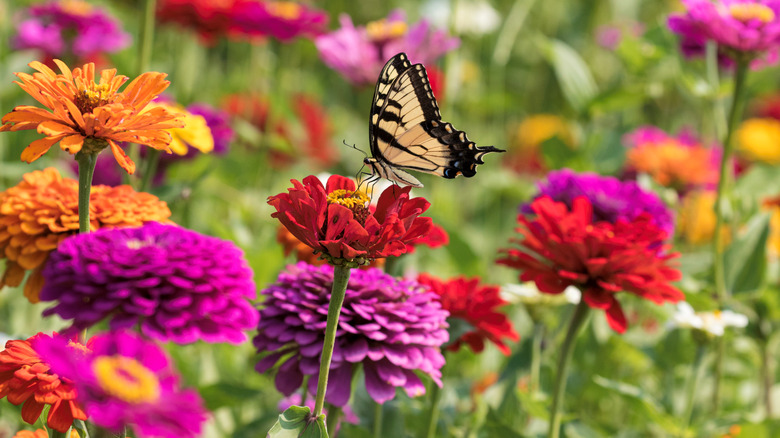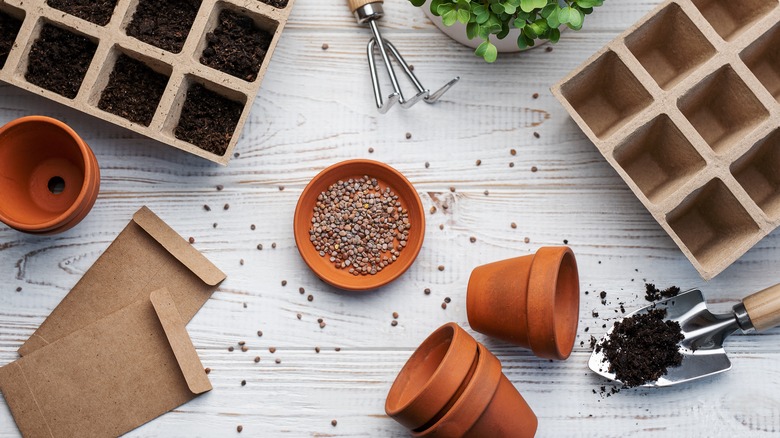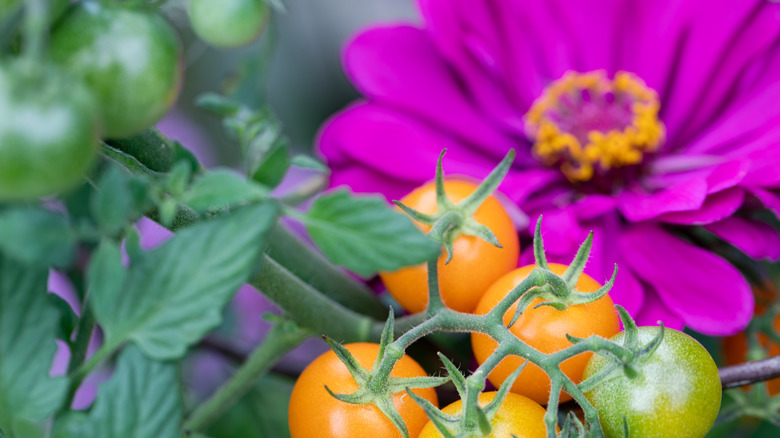The Best Time Of Year To Plant Zinnia Seeds, And How To Do It
Zinnias bring color and life to gardens all summer, thanks to both their impressive range of hues and their ability to attract pollinators. If you're already seeing your neighbor's zinnias blooming, you may assume that it's too late to start some of your own, but that's not necessarily the case. Zinnias generally begin flowering only about six weeks after they are sown, making them great flowers to plant at any time from a few weeks after your last frost until well into mid-summer, or even later depending on the length of your growing season.
Zinnias (Zinnia spp.) are heat loving flowers native to Mexico, Central America, and the Southwestern United States that can be grown as annuals in USDA zones 2 through 11. While you can start their seeds indoors and then plant them out a few weeks after your last frost, zinnias are also great candidates for direct sowing. Zinnias love warmth though, so your soil should be at least 60 degrees Fahrenheit before transplanting young zinnias and it's best to wait until the soil temperature is consistently 70 degrees Fahrenheit to direct sow zinnia seeds. While May through early July are ideal months for planting zinnias in many regions, gardeners in Southern areas can easily keep planting zinnia seeds well into August and still get plenty of blooms before the end of the growing season.
How to plant zinnias
While planting zinnias early ensures season-long color, you can also start zinnias later in the summer as long as you have enough time left to enjoy them before your first frost. Direct sowing is the simplest way to start zinnias once warm temperatures have arrived, but you can also use seed starting trays in a protected area for starting your zinnias if you've had trouble with birds or slugs eating your seeds or young seedlings. Just be careful when transplanting, as zinnias don't like having their roots disturbed.
Be sure to locate your zinnias in a garden bed with well-draining, fertile soil and full sun exposure. When direct sowing the seeds, plant them about ¼ inch deep and space them around 1 to 2 feet apart depending on the specific cultivar's size. While zinnias are moderately drought tolerant once they are established, it's important to water them when the top inch or two of soil is dry, especially when the seedlings are still young. Zinnias are considered moderate feeders and benefit from monthly applications of phosphorus-heavy fertilizer. While many people pinch their zinnias to encourage branching, this can delay blooms so you may want to avoid pinching if you are starting your zinnias later in the growing season.
Using zinnias in the garden
Thanks to their relatively rapid growth and quick maturity, zinnias can be a great option for filling in any gaps that emerge in your garden over the summer. Bare soil is quickly invaded by weeds, so using zinnias to fill in these spots can not just beautify your landscape, but also help keep it weed-free. Zinnias come in a wide variety of sizes and colors, so you're sure to find something that suits your garden, regardless of your style or color palette.
Zinnias aren't just good for flower gardens either. They're also a great option to tuck into corners of herb and vegetable gardens thanks to their ability to attract pollinators. So whether you want to upgrade your garden's tomato game or just add a little more color, zinnias are a great option. Don't forget to harvest your zinnia seeds to plant next summer as well!


